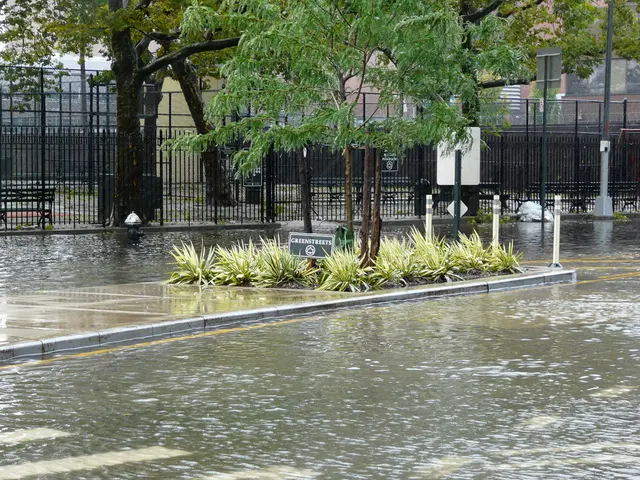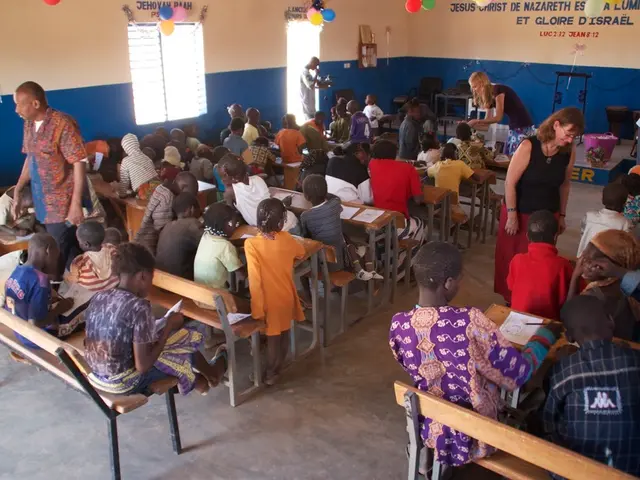Fifteen regions experience a lower influx of youthful migrants than would be anticipated based on their population size.
Spain Faces Challenge in Distributing Unaccompanied Migrant Minors
Spain's autonomous regions are grappling with an imbalance in the distribution of unaccompanied migrant minors (UAMs), with some regions hosting fewer minors than their population-based quotas suggest. The Canary Islands, the Balearic Islands, Ceuta, and Melilla are bearing the brunt of this imbalance.
According to government data, the regions with the most significant discrepancies between the number of UAMs they should be accommodating and the number they currently host are Andalusia (1,372 fewer), Valencia (1,216), and Galicia (620).
Following these regions are Castile and León (565); Castile-La Mancha (501); Extremadura (260); Asturias (214); Aragón (212); Murcia (195); Cantabria (148); Catalonia (136); La Rioja (89); Basque Country (79), and Navarre (49). Madrid is using 92% of its hosting capacity to accommodate UAMs, with a need to increase its capacity by 83 places.
In stark contrast, the Canary Islands, which should host 718 UAMs based on its population, is currently caring for 5,566. Ceuta, with 27 UAMs required and 526 currently hosted, and Baleares, with 396 UAMs required and 622 currently hosted, also face overcrowding. Melilla, with 28 UAMs required and 193 currently hosted, is less affected.
These figures, presented by the Secretary of State for Youth and Childhood, Rubén Pérez, at a meeting with the directors-general of the autonomous regions, illustrate the significant disparities in the accommodation of more than 15,000 UAMs in Spain. The average system capacity is established at 32 UAMs per 100,000 inhabitants, meaning that each territory's capacity is based on its population.
However, Aragón has not provided its accommodation figure to the government, while the Balearic Islands, Valencia, and Galicia have failed to comply with the department's data requests since March.
In response to the Government's calculations, the Community of Madrid has rejected the distribution criteria, calling them an "imposition." The autonomous communities have also rejected entering "the game" of the Ministry, stating they do not want to validate criteria they deem to have been imposed on them.
Galicia, meanwhile, denounces that the Government will not provide funding for the care of the minors expected to be transferred to its community. Other regional leaders have criticized the Government for a perceived lack of strategy regarding immigration and have questioned who will bear the costs of caring for the influx of UAMs.
The Government has proposed a protocol to assist UAMs who have sought asylum after arriving in the Canary Islands in small boats or cayucos. This proposal, sent to the Canarian government, aims to address the overcrowding in that region caused by ongoing arrivals.
The current system is characterized by overcrowding in entry regions and insufficient receiving capacity in others. Transfers rely on voluntary agreements rather than compulsory legal criteria, and efforts to establish a compulsory framework have so far been unsuccessful.
The average system capacity for accommodating unaccompanied migrant minors (UAMs) in Spain is based on the population of each region, yet some regions, such as Andalusia, Valencia, and Galicia, have failed to meet their quotas, while others, such as the Canary Islands, Ceuta, and Baleares, are facing overcrowding. This disparity in policy-and-legislation surrounding UAM distribution raises questions in politics and general news about the fairness and strategy of current regulations.
The government's proposed protocol to assist UAMs seeking asylum in the Canary Islands, aimed at addressing overcrowding, has been met with resistance from some autonomous communities, who argue that the criteria for UAM distribution is an imposition and question who will bear the costs of caring for the influx of UAMs.







